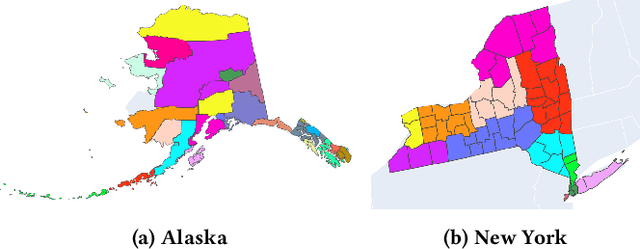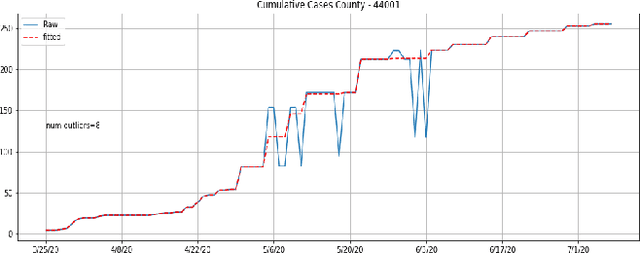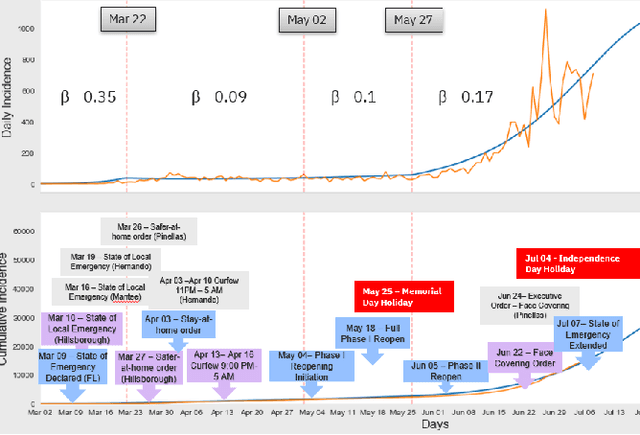Adaptive Epidemic Forecasting and Community Risk Evaluation of COVID-19
Paper and Code
Jun 03, 2021



Pandemic control measures like lock-down, restrictions on restaurants and gatherings, social-distancing have shown to be effective in curtailing the spread of COVID-19. However, their sustained enforcement has negative economic effects. To craft strategies and policies that reduce the hardship on the people and the economy while being effective against the pandemic, authorities need to understand the disease dynamics at the right geo-spatial granularity. Considering factors like the hospitals' ability to handle the fluctuating demands, evaluating various reopening scenarios, and accurate forecasting of cases are vital to decision making. Towards this end, we present a flexible end-to-end solution that seamlessly integrates public health data with tertiary client data to accurately estimate the risk of reopening a community. At its core lies a state-of-the-art prediction model that auto-captures changing trends in transmission and mobility. Benchmarking against various published baselines confirm the superiority of our forecasting algorithm. Combined with the ability to extend to multiple client-specific requirements and perform deductive reasoning through counter-factual analysis, this solution provides actionable insights to multiple client domains ranging from government to educational institutions, hospitals, and commercial establishments.
 Add to Chrome
Add to Chrome Add to Firefox
Add to Firefox Add to Edge
Add to Edge